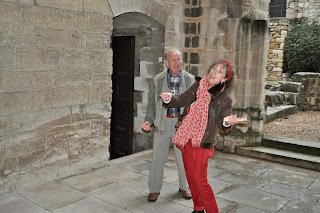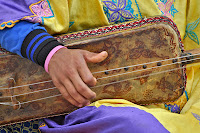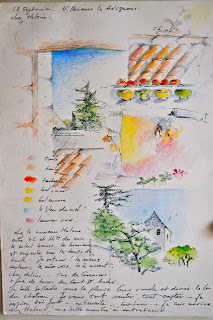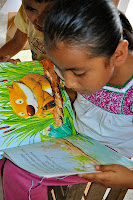| Members of Se Sentanemililis with Elena Poniatowska |
Queridos amigos,
At the end of January 2012, I posted Se Sentanemililis (One Sole Thought) in my blog.
(http://dick-keis.blogspot.mx/2012/01/se-sentanemililis-one-sole-thought.html)
(http://dick-keis.blogspot.mx/2012/01/se-sentanemililis-one-sole-thought.html)
The post told of a library project I am involved with in a small Nahuatl village in the Sierra Norte of Puebla. Nearly a year has transpired, I am now back in Mexico, and I am very pleased to report that the project is well off the ground and flourishing. The library was officially inaugurated in mid October of this year. The group was honored to have one of Mexico's most venerated authors, Elena Poniatowska, present for the ceremony. (http://en.wikipedia.or/wiki/Elena_Poniatowska)
| Gaudel Reyes & Elena, with group members |
The project has been initiated and developed through the determination and hard work of twenty young people from the pueblo. Gaudel Reyes (in blue shirt), a community member now studying human rights law in Puebla, has been one of the leaders of the project.
Gaudel asked me to share the following information with you:
| Dance group members after inauguration performance |
Gaudel asked me to share the following information with you:
• The library is open six days a week from 1:00 to 7:00 pm
•It now contains more than 2000 books
• 20-25 children a day come to the library to do homework and to research projects for school.
• The first literacy event was held in November with 22 children participating.
• The first week after the October inauguration,150 people visited the library.
• The first week after the October inauguration,150 people visited the library.
| The Ayotzinapan Community Library |
There are many very worthwhile and valuable projects that need support from others to be successful and grow. This is, without doubt, one of them. If any of you are able and would like to make a gift that will make a difference in people's lives, please follow the steps below:
• Send a check payable to Dick Keis with the words One Sole Thought Project in the memo line.
• Mail it to my daughter, Quena Keis:
• 2076 Lincoln St #1 Eugene, OR. 97405
She will deposit it in the account.
•
You can e-mail me (rbkeis@gmail.com) informing me that you sent a
check, and Quena or I can get back to you confirming that the check
arrived. It would be good to have e-mail addresses of donors so we can
update you as to the progress of the library.
I
can draw money directly from that account in pesos without paying any
transfer or exchange fees, so 100% of all donations will go directly
to the project.Last February we raised over $1500 for the project. This enabled the children to finish the construction of the building, get bookshelves, pay someone to be responsible for the operation of the library and have one cultural event in the new library.
| Youth of Se Sentanemililis with Elena |
Any funds raised now will be used for cultural and literacy events in the library. The plan is to have one event per month. Workshop presenters will volunteer their time, and Se Sentanemililis will cover transportation costs to Ayotzinapan. Two hotels in Cuetzalan, a pueblo a half an hour away, will offer free lodging to workshop presenters and artists.
I will do a community writing workshop in February. The estimated cost of one event is 1300 pesos ($100 US). If we can raise $1200, it will provide for one event per month. Donors will be kept informed of how the funds are used. In hopes of long term sustainability, the group is seeking donors who will make annual contributions. If you are interested in doing this, they will send a reminder e-mail each year. However, they will gladly accept a one time donation.
The following letter was sent to donors earlier this summer:
The youth, the indigenous boys and girls of the Se Sentanemililis Organization, send you a cordial greeting, hoping that all goes well for you. At the same time, we take advantage of this letter to express our sincerest thanks for your confidence and support for our educational project. Please know that your support will significantly affect each and every one of the inhabitants of our communities.We will make sure that you receive word of the progress that we make in the project, and be assured, we will not lose this link that we have created.
| Inauguration dinner |
Se Sentanemililis A.C
¡Muchas gracias! Thank you very much!
Ayotzinapan, Cuetzalan, Puebla
| Orange crate book shelves |
| Niños de Se Sentanemililis |








































